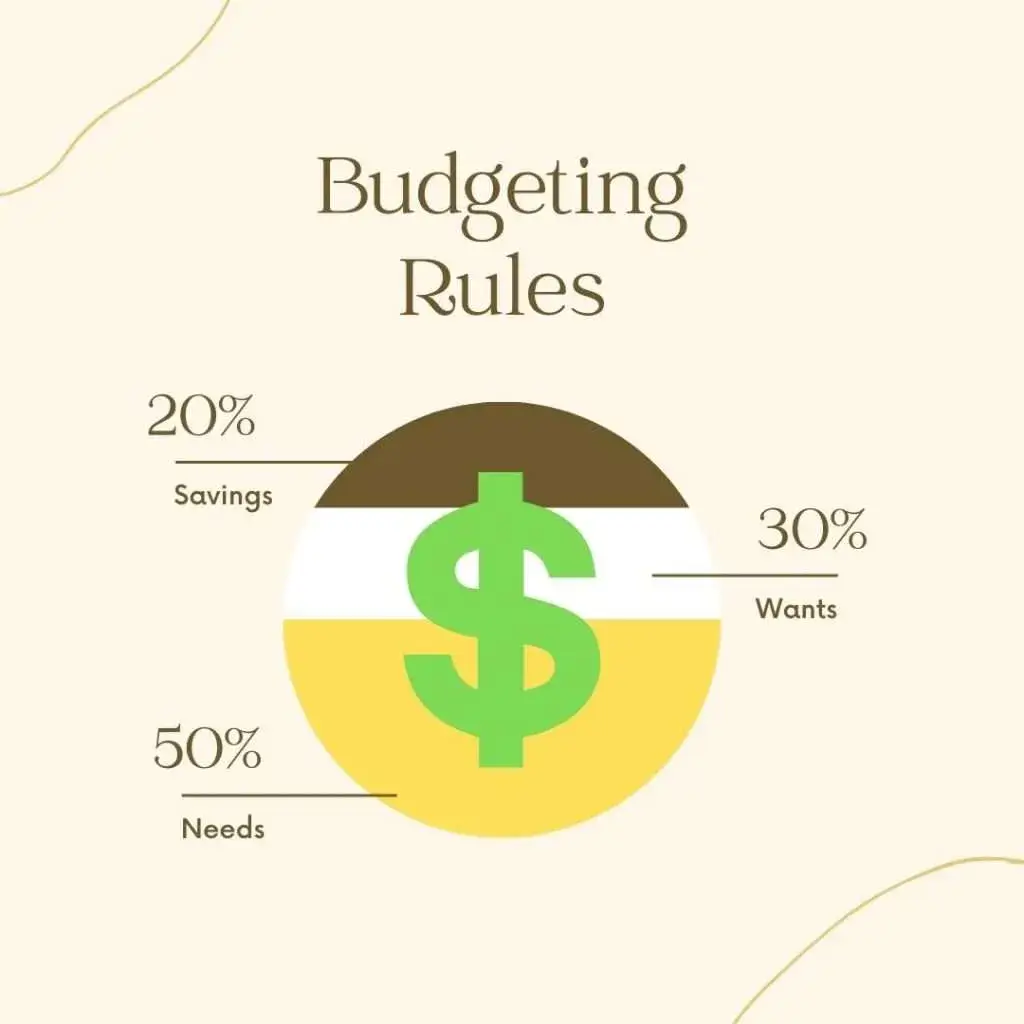Table of Contents
Retirement Planning: Ensuring a Comfortable Future
Retirement planning is a critical aspect of financial well-being that many Americans like you worry about. While some have plans in place, some are just beginning to consider options, and many have yet to start. It’s important to emphasize the necessity of planning for retirement. It ensures that you have the required savings and investments to maintain your current lifestyle and be prepared for unforeseen expenses during your retirement years.
Why Retirement Planning is Essential
Retirement planning is crucial for everyone, especially for those over the age of 50. You must start early to benefit from compound interest and mitigate the effects of inflation over time, and this is why saving for retirement is so important:
1. Financial Freedom
Saving for retirement ensures you have enough money to maintain your standard of living during your retirement years. Without sufficient savings, you may have to rely on Social Security, which might not be enough to meet your needs.
2. Independence
Retirement savings give you the freedom to pursue your interests without financial worries. Whether you are traveling, engaging in hobbies, or spending time with family, having adequate savings allows you to enjoy these activities stress-free.
3. Peace of Mind
Knowing you have enough retirement savings provides peace of mind and reduces stress. It allows you to enjoy your retirement without constantly worrying about finances.
The Benefits of Saving
As mentioned, one of the most significant benefits when saving for retirement is the power of compound interest. Compound interest allows your money to grow over time, helping you reach your retirement savings goals faster. For instance, if you start saving $500 per month in a retirement account at age 25 and earn an average annual return of 7%, your savings will grow to over $1 million by age 65.
Failing to save for retirement can lead to a lack of money during retirement or having to rely on family or government assistance. Therefore, it is crucial to start saving as early as possible, be prepared with a solid plan.
How Much Should You Save for Retirement?
Determining how much to save for retirement can be challenging. Consider these key factors:
1. Retirement Income Needs
Your retirement income needs depend on your lifestyle, health, and other factors like your location and how much you travel. A general rule of thumb is to aim for a retirement income of 70% to 80% of your pre-retirement income.
2. Retirement Age
The age at which you plan to retire will determine how much you need to save. If you plan to retire early, you will need more money to cover your retirement income needs.
3. Life Expectancy
Your life expectancy is another factor to consider. If you expect to live a long life, you will need more money to cover your expenses.
4. Inflation
Inflation can erode the value of your retirement savings over time. It is essential to factor in inflation into your retirement planning, typically assuming an inflation rate of 2% to 3% per year.
5. Retirement Accounts
The type of retirement accounts you choose can impact your savings. Traditional 401(k) and IRA contributions are tax-deductible, allowing you to save more on taxes and have more savings for retirement.
Other Factors to Consider
Social Security
Social Security benefits can provide a significant source of retirement income, but should not be relied upon solely. Your benefits depend on your earnings history, and future changes to the program could impact the amount you receive.
Healthcare Costs
Healthcare costs can be significant for many retirees and tend to increase with age. Planning for these costs is essential.
Long-term Care
Long-term care is another expense to consider. It can be costly, and Medicare and most health insurance plans do not cover all long-term care expenses.
You can use retirement calculators or work with a financial advisor to calculate the savings required for retirement. They can help you estimate your retirement income needs, factor in inflation and taxes, and determine how much you need to save each year.
Types of Retirement Accounts
1. 401(k) Plan
Overview: A 401(k) plan is an employer-sponsored retirement savings plan. Employees can contribute a portion of their salary to their 401(k) accounts on a pre-tax or post-tax (Roth 401(k)) basis. Benefits:
- Tax Advantages: Contributions are made with pre-tax dollars, reducing your taxable income. Roth 401(k) contributions are made with after-tax dollars, but withdrawals in retirement are tax-free.
- Employer Matching: Many employers match a portion of your contributions, effectively providing free money to boost your retirement savings.
- Higher Contribution Limits: In 2023, the contribution limit is $22,500, with an additional catch-up contribution of $7,500 for those aged 50 or older. Considerations:
- Withdrawal Rules: Early withdrawals (before age 59½) may incur a 10% penalty and income taxes.
- Required Minimum Distributions (RMDs): Must start at age 73 for traditional 401(k) accounts.
2. Traditional IRA
Overview: A Traditional Individual Retirement Account (IRA) allows individuals to save for retirement with tax-deferred growth. Benefits:
- Tax Deductibility: Contributions may be tax-deductible, depending on your income and whether you or your spouse are covered by a retirement plan at work.
- Tax-Deferred Growth: Earnings grow tax-deferred until you withdraw them. Contribution Limits: For 2023, the contribution limit is $6,500, with a catch-up contribution of $1,000 for those aged 50 or older. Considerations:
- Withdrawal Rules: Withdrawals before age 59½ may incur a 10% penalty and taxes. Withdrawals are taxed as ordinary income.
- RMDs: Required starting at age 73.
3. Roth IRA
Overview: A Roth IRA allows for tax-free growth and tax-free withdrawals in retirement. Benefits:
- Tax-Free Withdrawals: Contributions are made with after-tax dollars, and qualified distributions are tax-free.
- No RMDs: Unlike Traditional IRAs, Roth IRAs do not have required minimum distributions during the account holder’s lifetime. Contribution Limits: Same as Traditional IRAs—$6,500 for 2023, with a $1,000 catch-up contribution for those aged 50 or older. Considerations:
- Income Limits: Eligibility to contribute to a Roth IRA is phased out at higher income levels.
- Withdrawal Rules: Contributions can be withdrawn anytime without penalty. Earnings can be withdrawn tax-free after age 59½, provided the account has been open for at least five years.
4. SEP IRA
Overview: A Simplified Employee Pension (SEP) IRA is designed for self-employed individuals and small business owners. Benefits:
- High Contribution Limits: In 2023, you can contribute the lesser of 25% of your net earnings or $66,000.
- Tax Advantages: Contributions are tax-deductible, reducing your taxable income. Considerations:
- Eligibility: Must be 21 or older, worked for the employer in at least three of the last five years, and received at least $650 in compensation.
- Employer Contributions: Only employers can contribute to SEP IRAs.
5. Solo 401(k) Plan
Overview: A Solo 401(k) is a retirement plan for self-employed individuals without employees, except for a spouse. Benefits:
- High Contribution Limits: As both employer and employee, you can contribute up to $22,500 (employee) and an additional amount as employer, up to a combined limit of $66,000 for 2023.
- Catch-Up Contributions: An additional $7,500 if you are aged 50 or older. Considerations:
- Administrative Responsibilities: More administrative work than SEP IRAs, including filing Form 5500 annually once the plan exceeds $250,000.
- Withdrawal Rules: Early withdrawals may incur a 10% penalty and taxes.
6. Roth 401(k) Plan
Overview: A Roth 401(k) is similar to a traditional 401(k) but funded with after-tax dollars. Benefits:
- Tax-Free Withdrawals: Earnings and contributions grow tax-free, and qualified withdrawals are tax-free.
- Employer Matching: Some employers offer matching contributions, though these are pre-tax and will be taxed upon withdrawal. Contribution Limits: Same as a traditional 401(k)—$22,500 for 2023, with an additional $7,500 catch-up contribution for those aged 50 or older. Considerations:
- Withdrawal Rules: Contributions can be withdrawn tax-free at any time. Earnings can be withdrawn tax-free if you are at least 59½ years old and have held the account for at least five years.
- RMDs: Required starting at age 73.
7. SIMPLE IRA
Overview: The Savings Incentive Match Plan for Employees (SIMPLE) IRA is for small businesses with 100 or fewer employees. Benefits:
- Employer Matching: Employers must either match employee contributions up to 3% of compensation or make a 2% nonelective contribution for each eligible employee.
- Ease of Setup: SIMPLE IRAs are easier and less expensive to set up and manage compared to other retirement plans. Contribution Limits: In 2023, employees can contribute up to $15,500, with an additional $3,500 catch-up contribution for those aged 50 or older. Considerations:
- Lower Contribution Limits: Compared to other plans like the 401(k) or SEP IRA.
- Employer Requirements: Employers are required to contribute, which adds to their costs.
Strategies for Saving for Retirement
1. Automate Your Contributions
Set up automatic contributions to your retirement accounts to ensure you consistently save and take advantage of compound interest.
2. Diversify Your Investments
Invest in a mix of stocks, bonds, and other assets to spread risk and reduce the impact of market volatility.
3. Reduce Fees
Monitor fees charged by your retirement account provider, investment funds, or financial advisor. Lower fees mean more money in your account and higher returns over time.
4. Address Common Obstacles
Pay off debt early, build an emergency fund, and account for inflation in your plan.
5. Use Resources and Tools
Utilize retirement planning calculators to estimate your savings needs, track progress, and adjust plans as necessary.
Final Thoughts
Saving for retirement is a critical financial decision that ensures financial security, independence, and peace of mind. Start early to take advantage of compound interest, calculate your retirement savings needs based on your lifestyle and goals, automate contributions, diversify investments, and reduce fees. You should address common obstacles and use resources to track progress, seek professional advice from a financial planner or advisor. By taking these steps, you can ensure a comfortable and enjoyable retirement. You can access our Retirement AI ChatBot to submit a query or ask questions on retirement and investments.
References
- Empower Retirement. (2023). A guide to retirement planning. Retrieved from Empower
- NerdWallet. (2023). How to save for retirement. Retrieved from NerdWallet
- IRS. (2023). Retirement Topics – Contribution Limits. Retrieved from IRS.gov

